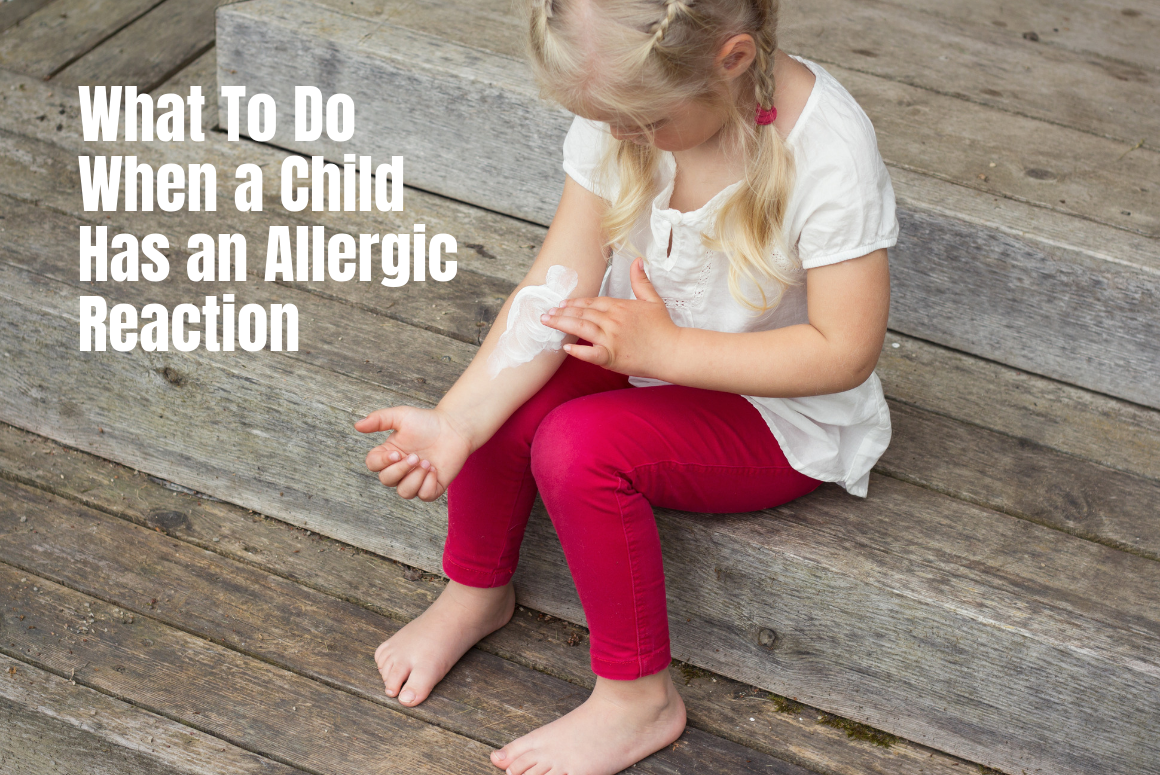Allergic conditions are the most common health issue that children face in North America overall, and as children spend time outside, and in recreation programs and camps, allergies that are often well managed at home can become a concern. With that in mind, let’s look at what to do when a child has an allergic reaction.
DEFINITION: An allergic reaction occurs when the immune system overreacts to a harmless substance known as an allergen. Anaphylaxis is the most severe allergic reaction.
Collect The Right Information
As a recreation organization, you should have as much information as possible about the types of allergies, the severity of a reaction, and the treatment for one, so that staff know how to manage and respond to an allergic reaction if one occurs. You should also have spare supplies for medications and equipment needed to respond to reactions, such as EpiPens, asthma inhalers, or standard allergy medication.
There are going to be times when a child may experience an allergic reaction that no one was aware of, but if you’re prepared with spare items and your staff are trained in how to use specific equipment, it makes it easier for them to respond quickly and appropriately so that the child can get the right medical attention. [Hint: ePACT’s Allergy & Dietary Modules can help with this!]
FACT: In 2015, 8.8 million children had skin allergies, while 4.2 million children had food allergies.
Recognize The Symptoms
When a child with an allergy comes into contact with an allergen (food, medication, or environmental), it can cause mild symptoms like skin irritation, watery eyes, or sneezing. In some cases, allergies can lead to anaphylaxis – this is a life-threatening condition, resulting in shock, a sudden drop in blood pressure, and difficulty breathing, and can lead to respiratory failure and cardiac arrest.
We want to avoid anaphylaxis wherever possible, so it’s important to recognize the symptoms of an allergic reaction as soon as possible. While reactions depend on the person and what they’re allergic to, here are some common symptoms:
- Environmental Allergy: Sneezing, runny/stuffy nose, skin irritation, breathlessness or wheezing, and watery or bloodshot eyes.
- Food Allergy: Sneezing, skin irritation, hives, rash, nausea/vomiting, diarrhea, breathlessness.
- Insect Sting: Skin irritation, hives, rash, trouble breathing, breathlessness, swelling around the face or contact area, rapid pulse, dizziness.
- Drug Allergy: Skin irritation, hives, rash, breathlessness, swelling around the face or contact area, rapid pulse.
Early signs of anaphylaxis can be mild but can quickly lead to more serious reactions including:
- Trouble breathing
- Hives or swelling
- Tightness of the throat
- Hoarse voice
- Nausea
- Vomiting
- Abdominal pain
- Diarrhea
- Dizziness
- Fainting
- Low blood pressure
- Rapid heartbeat
- Feeling of doom
- Cardiac arrest
FACT: For those with drug allergies, penicillin is the most common allergy trigger with up to 10% of people reporting an allergy to it.
Know The Right Treatment
Many mild reactions can be treated with a medicated cream or an oral antihistamine, such as diphenhydramine (e.g. Benadryl), but if a child experiences a more severe reaction resulting in anaphylaxis, the key is to respond immediately.
- Call 9-1-1 immediately
- Use an epinephrine autoinjector (most people who know they are at risk have one on them at all times, but this is another great reason to have spare items in your first aid kit) – be aware that you may have to administer two injections to control symptoms
- Make sure the child is lying down and that his/her legs are elevated
- Check their pulse and breathing regularly, and if they stop breathing, perform CPR right away
- Ensure that the child receives medical treatment and monitoring at a medical facility or hospital
FACT: 5% of the population overall has insect sting allergies and at least 90-100 deaths occur each year due to anaphylaxis following a sting.
Reduce Risk
The best way to deal with allergies is to do your part to avoid them in the first place, and reduce the risk of any reaction, especially anaphylaxis. The American College of Allergy, Asthma & Immunology has this information to reduce your child’s risk:
- Know your trigger: If a child has experienced anaphylaxis, it’s important to know what triggered it (food, latex, medication, and insect stings are the most common causes).
- Avoid your trigger: Review food labels and ask how food is prepared; make sure others know about specific drug allergies, and what alternatives a child can use; and take steps to prevent insect stings, like avoiding walking barefoot in grass, avoiding wearing bright clothing, not using sweet smelling perfumes, hairspray or lotion.
- Be prepared: Carry an autoinjector, provide camp or program staff with spares (or alert them that a child carries one), and teach friends and family how to use the autoinjector in the event that the child can’t do it themselves.
- Wear identification: Wear and/or carry identification or jewelry (bracelet or necklace) noting condition and allergens.
References:
- Allergic Reaction Definition – American Academy of Allergy Asthma & Immunology
- Food Allergy Facts & Statistics – Food Allergy Research & Education
- Allergy Facts & Figures – Asthma & Allergy Foundation of America
- Be S.A.F.E. Action Guide – Allergists and Emergency Physicians
- What To Do When You Have An Allergic Reaction – Cleveland Clinic

